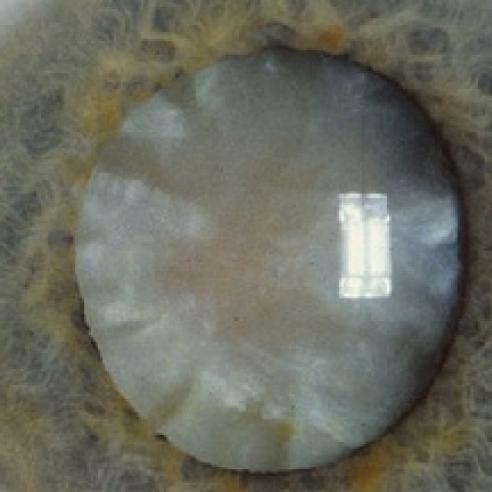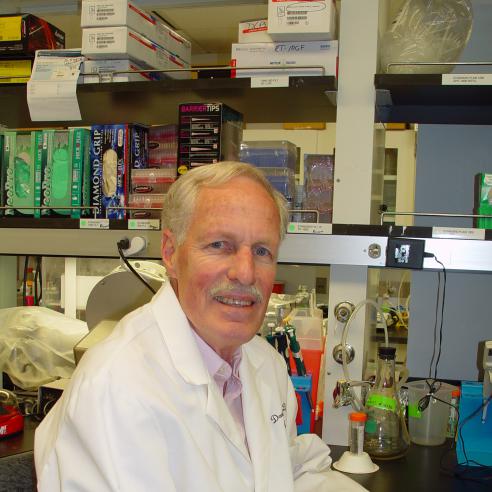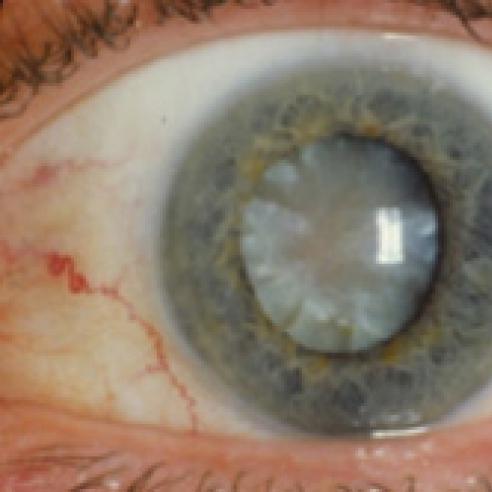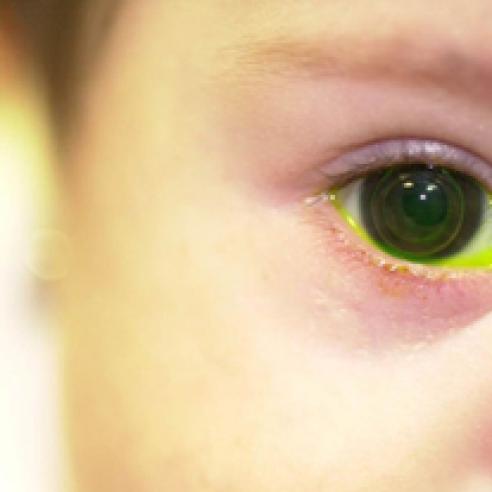RPB researchers are working to improve the management and early detection of cataract.
Cataract
Click one of the video selections to view.
A diagnosis of cataract means that your normally clear lens, located behind your eye's colorful iris, has grown cloudy. The lens contains mostly water and proteins that are specially organized to focus light on the retina for clear vision. In many people, the proteins begin to clump and obscure vision.
While recent scientific advances are closing in on what causes the proteins to rearrange and the lens to cloud up, we do know key risk factors for cataract formation. Growing older is one. So are long-term exposure to sunlight and smoking cigarettes. Other risk factors are listed on the downloadable fact sheet.
According to the World Health Organization, cataracts are the leading cause of blindness in the world. In the U.S., more than half of all people 65 and older have a cataract.
The majority of cataracts are age-related. A cataract begins as a small opacity within the lens and grows until it interferes with vision. Many people have cataracts and don't even notice until the defect grows large. Vision might appear a little hazy at first and lights might give off a halo or glare. Colors can appear faded. Blue might look green and yellow might appear white. Ultimately, everyday tasks become challenging.
It is at this point that many people have cataract-removal surgery. The surgeon removes the clouded lens and typically replaces it with an artificial lens. Thanks to many years of vision research, cataract surgery is safe and effective, and in the U.S., widely accessible.
Related News: Cataract

Stem Cells Regenerate Human Lens After Cataract Surgery In Children
A new approach to removing congenital cataracts in infants allows remaining stem cells to regrow functional lenses.

A Career Retooled
Dr. David Beebe's studies of the vitreous body - the gel that fills the eye - are aimed at identifying the mechanism responsible for age-related nuclear cataracts and open angle glaucoma.

Eye Drops Could Clear Up Cataracts Using Newly Identified Chemical
RPB-supported researchers have partially reversed cataracts in dogs using eye drops and injections of a naturally occurring steroid in the human body.

New research sheds light on how UV rays may contribute to cataract
A new study offers an explanation for how years of chronic sunlight exposure can increase the risk of cataract, a clouding of the eye lens that typically occurs with aging. The study firms up a link between the...

Contacts better than permanent lenses for babies after cataract surgery
For adults and children who undergo cataract surgery, implantation of an artificial lens is the standard of care. But a clinical trial, funded jointly by RPB and the National Eye Institute, suggests that for most...
Subscribe
Get our email updates filled with the latest news from our researchers about preventing vision loss, treating eye disease and even restoring sight. Unsubscribe at any time. Under our privacy policy, we'll never share your contact information with a third party.
| General Info | Grants | News & Resources |




